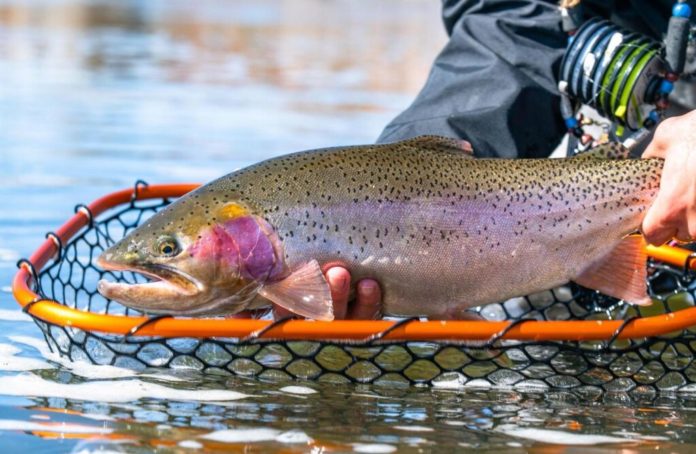Nolan Dahlberg/Special to the Daily
It’s the middle of the summer and the heat has been on high for weeks. Finally some cooler water has helped the temperature in the upper Colorado River. And with August right around the corner, anglers have been reaching for a bigger dry fly. Anticipating the hopper fishing while covering the multitude of other insects already present can be a challenging endeavor. Fishing a dry-dropper rig is the perfect answer to the present river conditions.
A quick look along the bank gives fly anglers a heads-up when the stoneflies are around. Their exoskeleton cases cling to boulders and riverside rocks, giving away their presence. A large dry fly such as a PMX or Chubby Chernobyl mimics the silhouette a huge insect casts. These stoneflies are active and present in the Eagle and Colorado River right now.
Cooler nights bring thoughts of fall, a time when terrestrial insects quickly become large food targets for hungry trout. Grasshoppers, beetles and ants are prevalent along the Colorado River. Strong winds blow terrestrials, land-based insects, onto the water. All have a clumsy appearance that strong swimming trout take advantage of regularly.
Grasshoppers are a favorite among local fly-fishers for eliciting ferocious strikes. Trout strike a large grasshopper with authority, killing the bug in the process. Trout do not like any large food source — hoppers, beetles and crayfish — to have the chance to grab gills or struggle in their gullet. The result can be intimidating when the first large trout smashes your hopper fly along the willow-lined riverbank.
Nolan Dahlberg/Special to the Daily
But there are still a lot of other bugs around — caddis, small stoneflies, pale morning duns and blue wing olives. Trout actively feed on all of these insects throughout the summer. Just because we want and anticipate hopper fishing doesn’t negate the other bugs. A dry-dropper rig covers multiple bases at once.
Using a large buoyant dry fly to support the weight of the nymph is key. Too small of a dry fly and the nymph pulls the fly down easily. Large grasshopper or stonefly imitations have the size and material to carry a weighted nymph efficiently.
Early mornings can be cool and slow down the hatch. To match the natural activity in the river, anglers should fish a dry-dropper with a long piece of tippet attached to the back of the dry fly. Drop a heavy, beaded nymph that sinks quickly and covers the stair step along the bank where the depth drops. Active fish moving into the shallower water will eat the dry fly. Trout positioned along the edge of the river but slightly into the current will eat the dropper. The amount of nymphs in the water waiting on the warmth of the morning sun to emerge makes the dropper a key component for success.
Nolan Dahlberg/Special to the Daily
As the morning progresses and the sun spurs along insect activity, trout will follow along with increased feeding behavior. The amount of insects in the water pushes trout into a feeding mode where they have the tendency to chase food. Dropping an unweighted nymph that imitates an emerging insect leads to more bites. Flies like an X-caddis, prince nymph or yellow sally emerger are extremely effective.
Attaching a fly to another fly can be challenging for some anglers. There are some who chose to attach the dropper from the eye of the dry fly. This can drown the dry fly prematurely and give you an improper drift. Tying the dropper to the bend of the dry fly hook is, what I feel, the proper way. By tying a clinch knot or improved clinch knot into the end of a piece of tippet and slipping the loop over the hook point of the dry fly, then cinching it up tight, presents both flies effectively.
Dry-dropper fly rigs cover two different depths in one drift. It is a way to present two stages in an insect’s development — as well as a way to deliver two different insects at once. Why use a dry-dropper fly rig? The reasons are evident. And the results speak very loudly.
Credit: Source link































